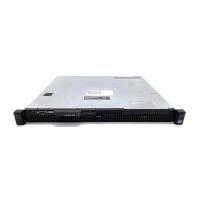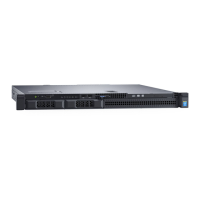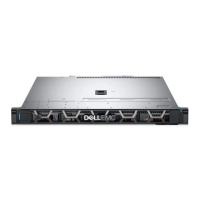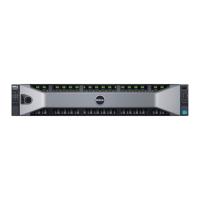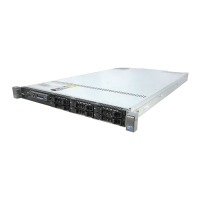Dell PowerEdge R220 Technical Guide 24
can keep both high performance and good acoustics across a wide range of ambient temperatures
(10 °C ~ 35 °C).
Acoustical design
The acoustical design of the PowerEdge R220 reflects the following:
Versatility: The PowerEdge R220 saves you power draw in the data center, but is quiet enough
for the office environment in typical and minimum configurations. Compare the values for LpA in
Table 14 for these configurations, and note that they are lower than ambient measurements of
typical office environments.
Adherence to Dell’s high sound quality standards: Sound quality is different from sound power
level and sound pressure level in that it describes how humans respond to annoyances in sound,
like whistles and hums. One of the sound quality metrics in the Dell specification is prominence
ratio of a tone, which is listed in Table 14.
Noise ramp and descent during bootup from power off: Fan speeds and noise levels ramp
during the boot process (from power off to power on) in order to add a layer of protection for
component cooling in the case that the system were not to boot properly. To keep bootup as
quiet as possible, the fan speed reached during bootup is limited to about half of full speed.
Table 14 details the acoustical performance for the R220.
Acoustical performance
Configuration
(23 ± 2°C
ambient)
1
L
WA
-UL is the upper limit sound power levels (L
WA
) calculated per section 4.4.1 of ISO 9296 (1988) and measured in
accordance to ISO 7779 (2010).
2
L
pA
is the average bystander position A-weighted sound pressure level calculated per section 4.3 of ISO9296 (1988) and
measured in accordance with ISO 7779 (2010). The system is placed within a rack enclosure (base of system is 75 cm
above floor).
3
Prominent tone: Criteria of D.6 and D.11 of ECMA-74 11th ed. (2010) are followed to determine if discrete tones are
prominent. The system is placed on a standard table in 75 cm height and acoustic transducer, binaural head, is at front
operator position; reference ISO 7779 (2010) Section 8.6.1.
4
Standby: AC power is connected to power supply units but system is not turned on.
5
Idle: Reference ISO 7779 (2010) definition 3.1.7; system is running in its operating system but no other specific activity.

